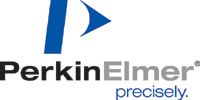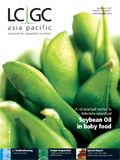A Novel Method for the High-Speed Determination of Fuel Diluents in Lubricating Oils
LCGC Asia Pacific
The performance of lubricating oil is significantly degraded by the presence of fuel contaminants such as gasoline and diesel. Recycled oil is particularly susceptible to this form of contamination. Consequently, producers and distributors of lubricating oil must go to great lengths to ensure the levels of fuel contamination are kept to a safe limit (typically 4–5%) in these products.
Timothy Ruppel, Gerald Hall and Andrew Tipler, PerkinElmer Inc., Waltham, Massachusetts, USA.
The performance of lubricating oil is significantly degraded by the presence of fuel contaminants such as gasoline and diesel. Recycled oil is particularly susceptible to this form of contamination. Consequently, producers and distributors of lubricating oil must go to great lengths to ensure the levels of fuel contamination are kept to a safe limit (typically 4–5%) in these products. Traditionally, this analysis is performed by flash point or by gas chromatography (GC) through a direct injection of the lubricating oil into the gas chromatograph (GC), according to ASTM Methods D-3524 and D-3525. These methods are time consuming and will stress the instrumentation by the introduction of very heavy hydrocarbons and non-volatile material such as soot. Users may have hundreds of thousands of samples to run each year, so an alternative method that is fast and robust is desirable. This discussion outlines the principles and technology for such a method.
Experimental
The gas chromatograph used in this article is a PerkinElmer Clarus GC with a programmable split/splitless (PSS) injector with the PreVent pressure-balanced system and flame ionization detector (FID). The capillary column used was a PerkinElmer Elite-1 (15 m × 0.25 mm × 0.25 μm), with a restrictor of 137 mm × 0.075 mm i.d. deactivated fused silica. The carrier gas, helium, is programmed with a pressure of 45 psig for 1.2 min, decreased to 2.0 for the remainder of the analysis with a split flow of 100 mL/min. The auxiliary pressure supplied to the PreVent system is 15 psig for 1.20 minutes, and then increased to 58 psig for the remainder of the analysis. The GC oven is isothermal at 225 ºC and the PSS injector is isothermal at 350 ºC. The FID conditions are as follows: temperature = 400 ºC; range = 1; attenuation = 4, air flow = 450 mL/min; hydrogen flow = 45 mL/min. Blank base oil and diesel fuel for standards were prepared; a clean motor oil was used for syringe wash.
Results
Peak separation is optimized to resolve fuel from the oil, but not resolve individual fuel components, as shown in Figure 1, thereby saving time. Overlap of diesel range organics with motor oil is defined as n-C20 alkane. Fuel is defined as the lump sum of any volatiles less than n-C20. This will include gasoline and diesel range fuels. After n-C20 elutes, all higher-boiling oil is backflushed rapidly off the head of the column to clean the column for the next injection without temperature programming. This is accomplished by the PreVent accessory by diverting the flow path out to vent. The isothermal GC method allows for a minimum time between injections of 3.5 minutes. This is a 10-fold increase in throughput from that shown in current ASTM methods.

Figure 1
Conclusion
A practical method has been developed and tested that allows for high-throughput testing of fuel diluents in used motor oil for up to 400 samples per day. This method withstood ruggedness testing in several laboratories and provides results directly comparable to established methods. The direct injection of used motor oil means no sample preparation, high throughput and less human error. Cost analysis (less labour and initial start-up costs) has been calculated to be less than $0.30 per sample.

PerkinElmer Inc.
940 Winter Street, Waltham, Massachusetts 02451, USA
tel. +1 800 762 4000 or +1 203 925 4602
fax +1 203 944 4904 Website: www.perkinelmer.com








